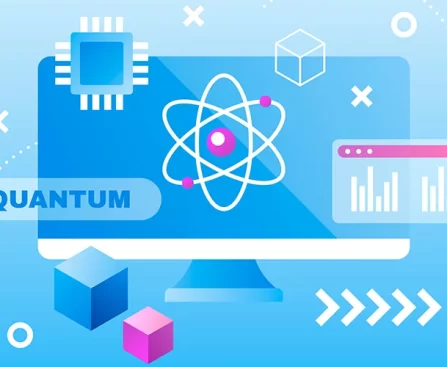Nanotechnology: The Future of Science and Engineering is a multidisciplinary field of science, engineering, and technology that focuses on manipulating matter at the nanoscale, which typically involves structures and phenomena on the scale of nanometers (one billionth of a meter). The prefix “nano” refers to this incredibly small size. Types of Nanotechnology Nanotechnology encompasses a […]
Quantum Computing: is a cutting-edge field of computing that leverages the principles of quantum mechanics to process and manipulate information in fundamentally different ways than classical computers. Classical computers, which include the devices we use daily like smartphones and laptops, use bits as the basic unit of information, where each bit represents either a 0 or […]
Autonomous Vehicle: often referred to as a self-driving car or driverless car, is a type of vehicle equipped with advanced technologies and systems that allow it to operate and navigate without direct human intervention. These vehicles use a combination of sensors, cameras, radar, lidar, GPS, and sophisticated computer algorithms to perceive their environment, make real-time […]
Internet of Things: (IoT) refers to a network of interconnected physical objects or “things” that are embedded with sensors, software, and other technologies, allowing them to collect and exchange data with other devices and systems over the internet. These objects can be everyday items such as household appliances, industrial machines, vehicles, wearable devices, and more. […]
3D Printing Technology, also known as additive manufacturing, is a manufacturing process that creates three-dimensional objects by layering material on top of itself. It is a revolutionary technique that has gained widespread use across various industries due to its versatility and capabilities. Here’s a comprehensive definition: 3D printing technology is a process of creating physical […]
Automation: Features, Benefits & How Does it Work, refers to the use of technology and machinery to perform tasks and processes with minimal human intervention. It involves the application of various technologies, such as robotics, computer software, and control systems, to execute repetitive, time-consuming, or complex tasks efficiently and consistently. Automation aims to improve productivity, […]
Cryptocurrency: is a type of digital or virtual currency that uses cryptography for security. Unlike traditional currencies issued and regulated by governments (such as the US dollar or the Euro), cryptocurrencies operate on decentralized networks based on blockchain technology Types of Cryptocurrency There are thousands of cryptocurrencies in existence, Some of the most well-known and […]
Computer Security: often referred to as cybersecurity or information security, is the practice of protecting computer systems, networks, and data from unauthorized access, disclosure, alteration, or destruction. Its primary objective is to ensure the confidentiality, integrity, and availability of digital information and computing resources. Computer security encompasses a wide range of measures and technologies designed […]
Programming Languages: is a formalized and structured means of communicating instructions to a computer. It serves as an intermediary between human programmers and the computer’s hardware, allowing developers to write, understand, and manage code to perform various tasks and solve problems. Programming languages are designed with a specific syntax and semantics, enabling programmers to express […]
Big Data: Refers to the vast and intricate collection of data that is too large and complex to be processed and analyzed using traditional data management tools and techniques. This data is characterized by its three main dimensions, often referred to as the three V’s: Volume: Big data involves massive amounts of information generated from […]










